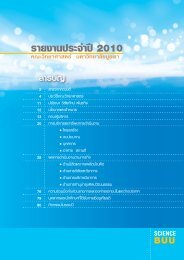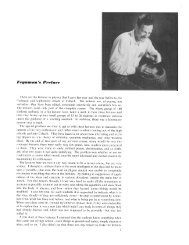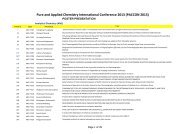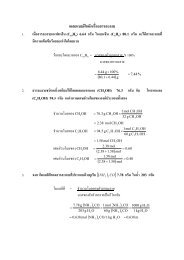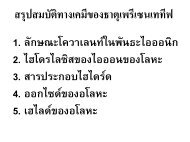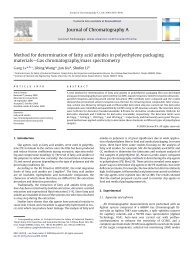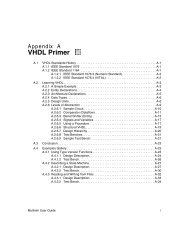USER MANUAL SWAN Cycle III version 40.72A
USER MANUAL SWAN Cycle III version 40.72A
USER MANUAL SWAN Cycle III version 40.72A
Create successful ePaper yourself
Turn your PDF publications into a flip-book with our unique Google optimized e-Paper software.
34 Chapter 4<br />
| -> REGular [xpinp] [ypinp] [alpinp] [mxinp] [myinp] [dxinp] [dyinp] |<br />
| |<br />
< CURVilinear [stagrx] [stagry] [mxinp] [myinp] > &<br />
| |<br />
| UNSTRUCtured |<br />
(EXCeption [excval])<br />
&<br />
| -> Sec |<br />
(NONSTATionary [tbeginp] [deltinp] < MIn > [tendinp])<br />
| HR |<br />
| DAy |<br />
OPTIONS CURVILINEAR AND UNSTRUCTURED NOT FOR 1D-MODE.<br />
With this required command the user defines the geographic location, size and orientation<br />
of an input grid and also the time characteristics of the variable if it is not stationary.<br />
If this is the case (the variable is not stationary), the variable should be given<br />
in a sequence of fields, one for each time step [deltinp]. The actual reading of values<br />
of bottom levels, currents, etc. from file is controlled by the command READINP.<br />
This command INPGRID must precede the following command READINP.<br />
There can be different grids for bottom level (BOTTOM), flow current (CURRENT), bottom<br />
friction coefficient (FRICTION) and wind velocity (WIND). If the current velocity components<br />
are available on different grids, then option VX, VY can define these different grids for<br />
the x− and y−component of the current, respectively (but the grids must have identical<br />
orientation). Different grids for VX and VY may be useful if the data are generated by a<br />
circulation model using a staggered grid. The same holds for the wind velocity components.<br />
If the command INPGRID is given without any of the keywords BOTTOM, WIND, etc.<br />
it is assumed that all the input grids are the same.<br />
In the case of a regular grid (option REGULAR in the INPGRID command) the current and<br />
wind vectors are defined with the x− and y−component of the current or wind vector with<br />
respect to the x−axis of the input grid. In case of a curvi-linear grid (option CURVILINEAR<br />
in the INPGRID command) the current and wind vectors are defined with the x− and<br />
y−component of the current or wind vector with respect to the x−axis of the problem<br />
coordinate system. For wind velocity and friction coefficient it is also possible to use a<br />
constant value over the computational field (see commands WIND and FRICTION). No grid<br />
definition for wind and friction is then required.<br />
Note that in case of option BOTTOM only stationary input field is allowed.<br />
If the computational grid is unstructured (generated by Triangle or Easymesh), the input





